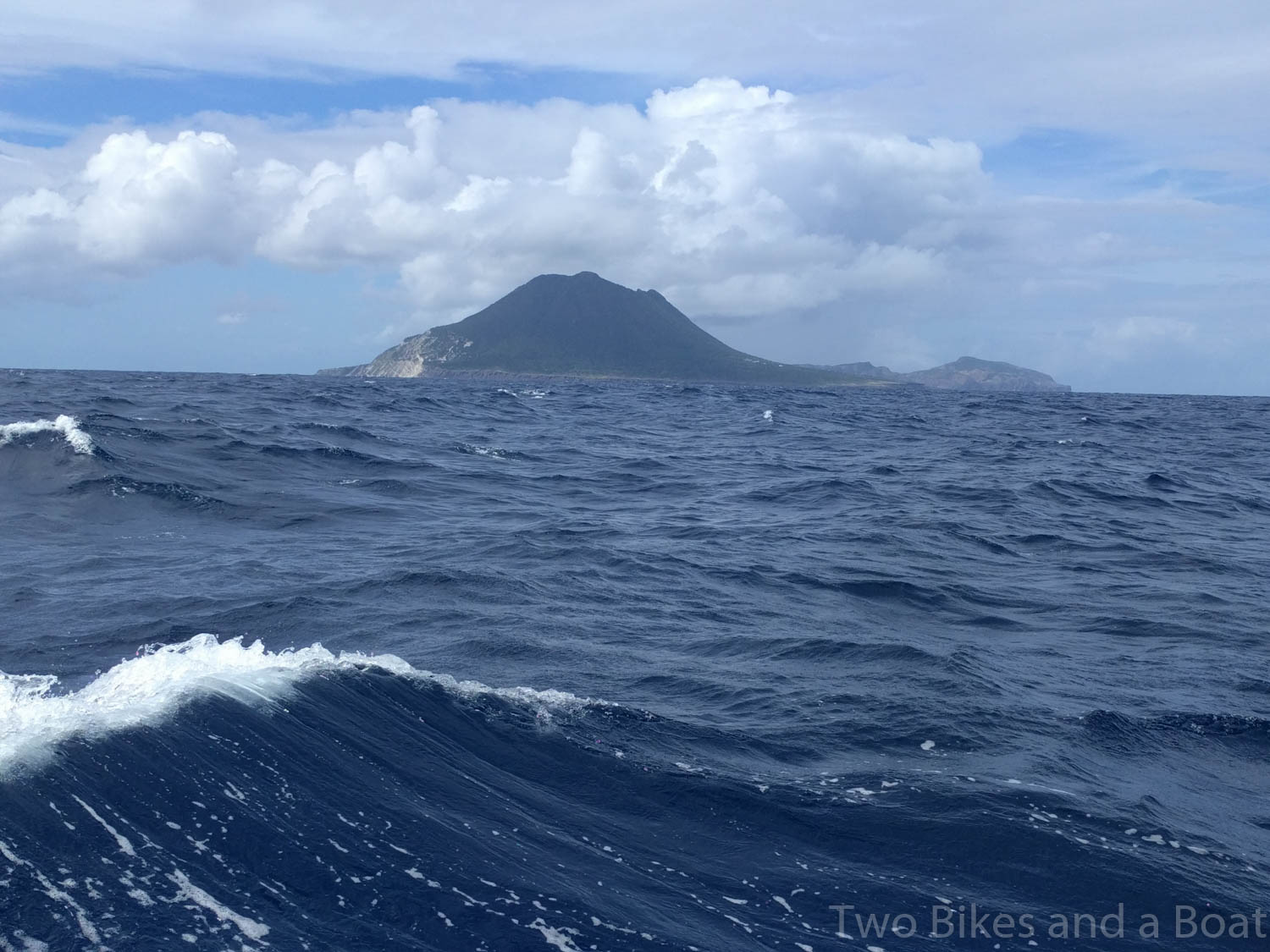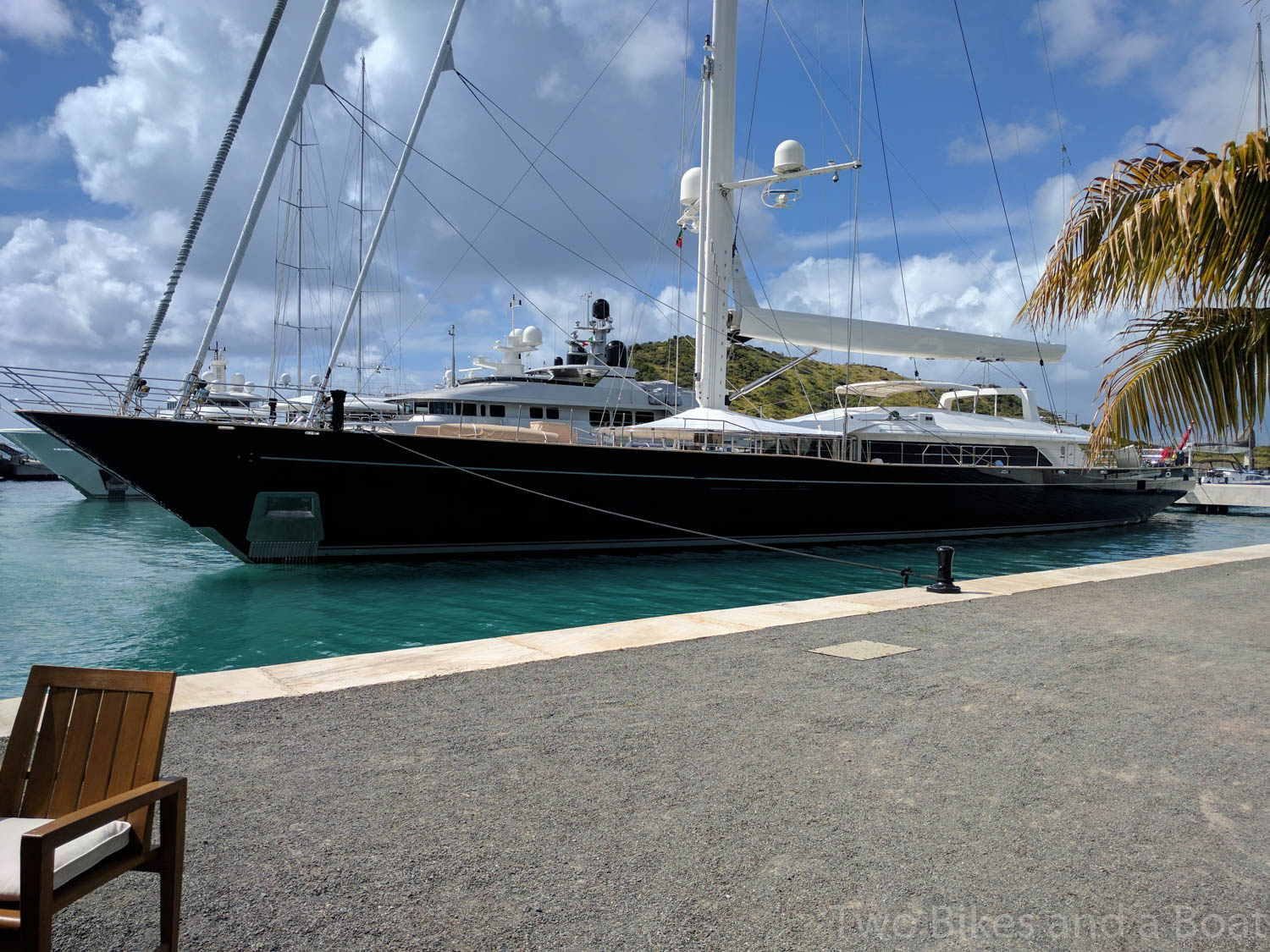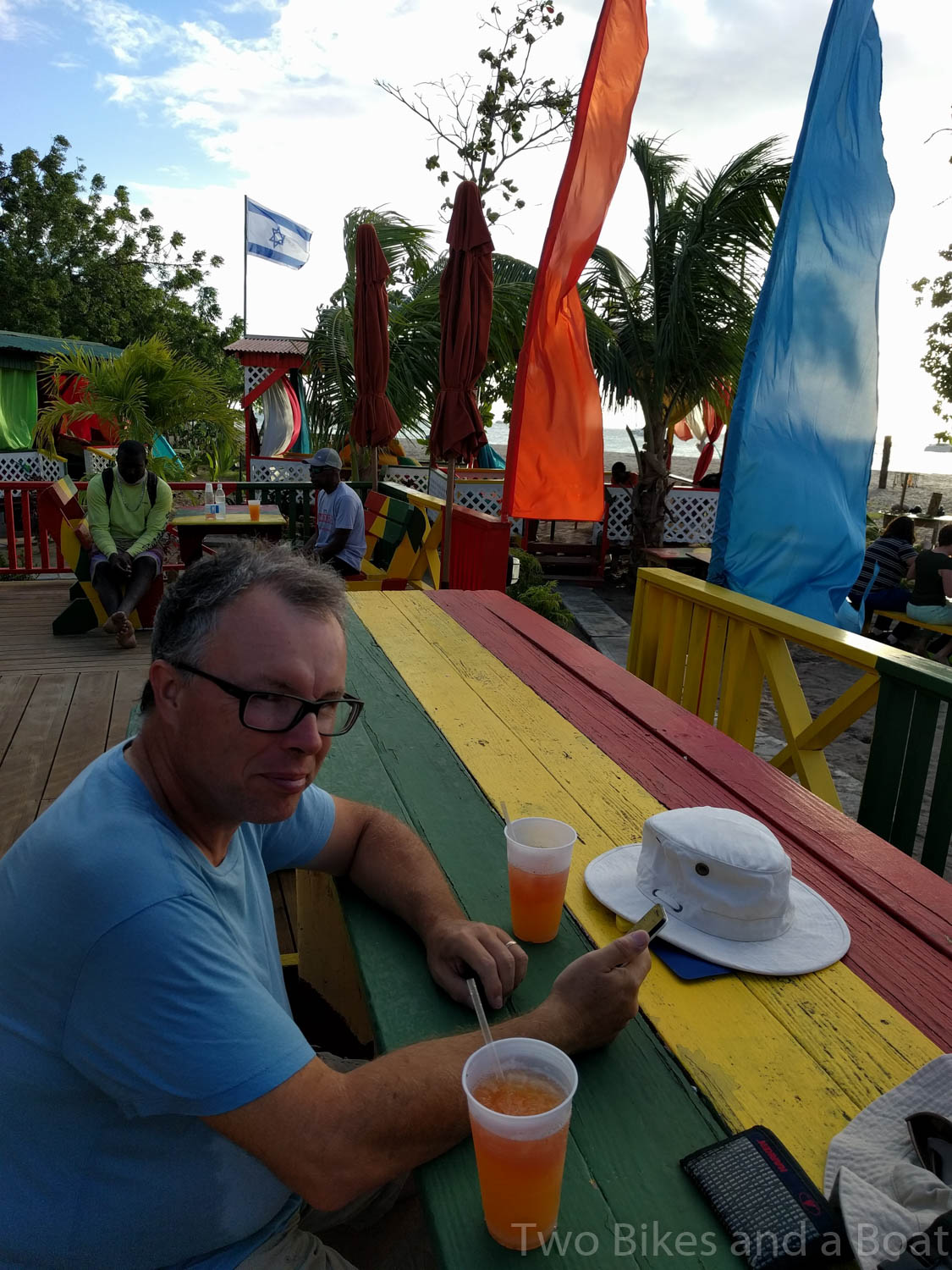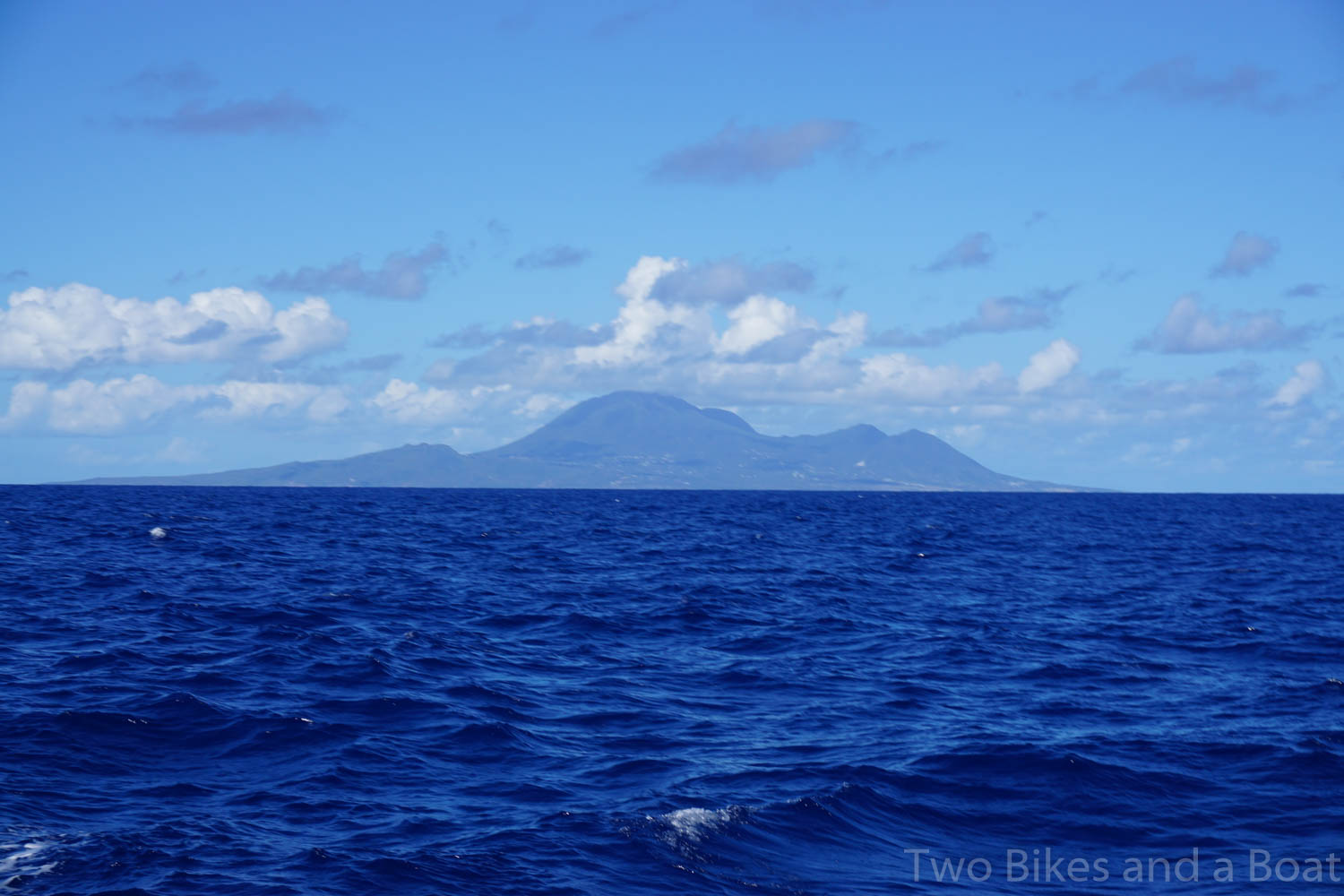Since arriving in the Caribbean last November, we have checked into 8 countries, visited over a dozen islands, and can’t help but notice the idiosyncrasies of their naming conventions. From simple repetition, to stating the obvious, to the opposite of the obvious, the place names have been a continual source of amusement. Here are some of our favourites:
Under the category of repetitious, the winner is Saint John, or the french St-Jean, or the Dutch Sint John. Clearly he was everyone’s favourite saint of the day, with a city, town, parish, or bay named after him on almost every single island we visited. Sometimes, to distinguish one Saint John from another, a further moniker is added, like in St. Kitts and Nevis, one country with two St. John’s. One is St. John Capisterre, the other St. John Figtree Parish.
Under the category of stating the obvious (or perhaps that should be lacking in imagination?) the hands-down winner is the island of Saba. This is a small (13 square kilometres, a population of just under 2,000), rather isolated island, a Special Municipality of the Netherlands where Dutch is still spoken. Maybe these names lost something in the translation, but how is this for obvious: Its towns are called The Bottom (the capital, and, you guessed it, the lowest down), Windwardside (guess which side that’s on), Hell’s Gate (we’ll see more of these, they are usually a geothermal opening of some sort) and of course, St. John’s, everyone’s favourite saint. Their volcano is called Mount Scenery (unique, but still it’s pretty obvious why, if you walk up to the top like we did), and the one road linking all the towns is simply called The Road.
More very popular and very obvious names, usually based on geographic features, include:
- Marigot. All the French islands have one. It means swamp or lagoon, an enclosed body of water
- Soufrière. Both Guadeloupe and Montserrat named their active volcanoes this. It means sulphur. I gather St. Lucia and Dominica also have a Soufrière, although we haven’t made it that far yet.
- Sugarloaf, or the French Pain de sucre. Plenty of small, conical islands named this. A sugarloaf was the usual form in which refined sugar was produced and sold until the late 19th century, and I guess since these islands were the main source of sugar cane…
- Hell’s Gate, or the French Trou à diable, usually refer to a geothermal feature, and so far we have seen those on Saba, Iles des Saintes (part of Guadeloupe) and Montserrat.
And finally, there is the whole matter of Basse Terre. This means low land, and again is a very common name. In the case of St. Kitt’s capital city, it is a simple statement of the obvious, as it is located in the lowlands of that island. But after that, it starts to get complicated. St. Martin uses the variation Les Terres Basses. The Iles des Saintes, two lovely islands that are part of Guadeloupe are named Terre-de-Bas (low land) and Terre-de-Haut (high land) even though they are both volcanic islands. Granted, Terre-de-Haut’s volcano is higher than the one on Terre-de-Bas.
As for the mainland of Guadeloupe, I think the French explorers were just messing with us. Guadeloupe is shaped like a butterfly, with the two wings named Basse-Terre and Grande-Terre , which is all well and fine, except that the wing that is mountainous and has the volcano is Basse-Terre (low land), and it’s largest city is called Basse-Terre too, just to add to the confusion. The wing that is lower is Grande-Terre (big land), which has long beaches and sugarcane fields. Perhaps those doing the naming had been enjoying too much of the local rum while doing so?
So if it sounds like we have been somewhere before, we might have doubled back or just hit one of the common place names.
















